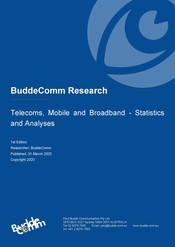Australia - Broadcasting and Pay TV - Overview and Analysis - 2006

Last updated: 18 Dec 2006 Update History
Report Status: Archived
Report Pages: 22
Analyst: Kylie Wansink
Synopsis
During the five years from 2001 to 2005, viewing of Free-To-Air (FTA) television fell 11%, while overall TV viewing increased 8.5%, mainly driven by the rise of pay TV. The FTA networks are expected to see intense competition for viewers and advertising in 2006 and beyond, which will impact on their cost margins as they will be forced to put more money into programming and marketing. Despite strong revenue growth in 2005 amongst pay TV providers, it is likely to taper off moving into 2007 as there is unlikely to be sufficient growth in new subscribers to fuel further growth. However, from 2006/2007 onwards, the cost structure of the industry will become more sustainable and the industry will become more profitable. This report provides key statistics and analyses in the areas of FTA television, pay TV and radio.Related Reports
- Australia - Telecoms, Mobile and Broadband - Statistics and Analyses
- Australia - Data Centre Market
- South Pacific Islands - Telecoms, Mobile and Broadband - Statistics and Analyses
- Samoa - Telecoms, Mobile and Broadband - Statistics and Analyses
- Papua New Guinea - Telecoms, Mobile and Broadband - Statistics and Analyses
- New Zealand - Telecoms, Mobile and Broadband - Statistics and Analyses
- French Polynesia - Telecoms, Mobile and Broadband - Statistics and Analyses
- New Caledonia - Telecoms, Mobile and Broadband - Statistics and Analyses
- Vanuatu - Telecoms, Mobile and Broadband - Statistics and Analyses
Share this Report
TMT Intelligence
A platform to scale your intelligence tasks
Monitor critical insights with our AI-powered Market Intelligence Platform gathering and analyzing intelligence in real time. With AI trained to spot emerging trends and detect new strategic opportunities, our clients use TMT Intelligence to accelerate their growth.
If you want to know more about it, please see:
Research Methodology
BuddeComm's strategic business reports contain a combination of both primary and secondary research statistics, analyses written by our senior analysts supported by a network of experts, industry contacts and researchers from around the world as well as our own scenario forecasts.
For more details, please see:
More than 4,000 customers from 140 countries utilise BuddeComm Research
Are you interested in BuddeComm's Custom Research Service?
Hot Topics
News & Views
Have the latest telecommunications industry news delivered to your inbox by subscribing to BuddeComm's weekly newsletter.